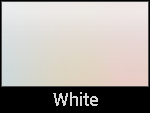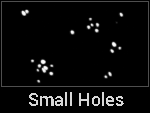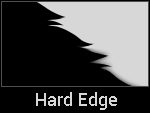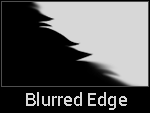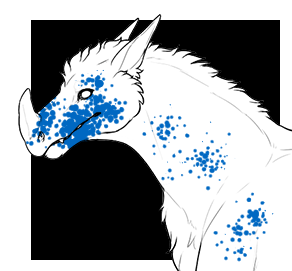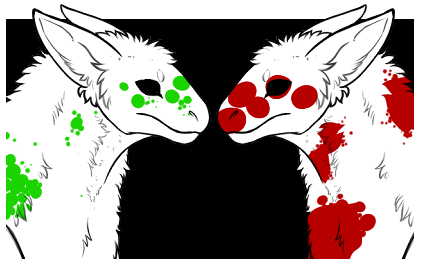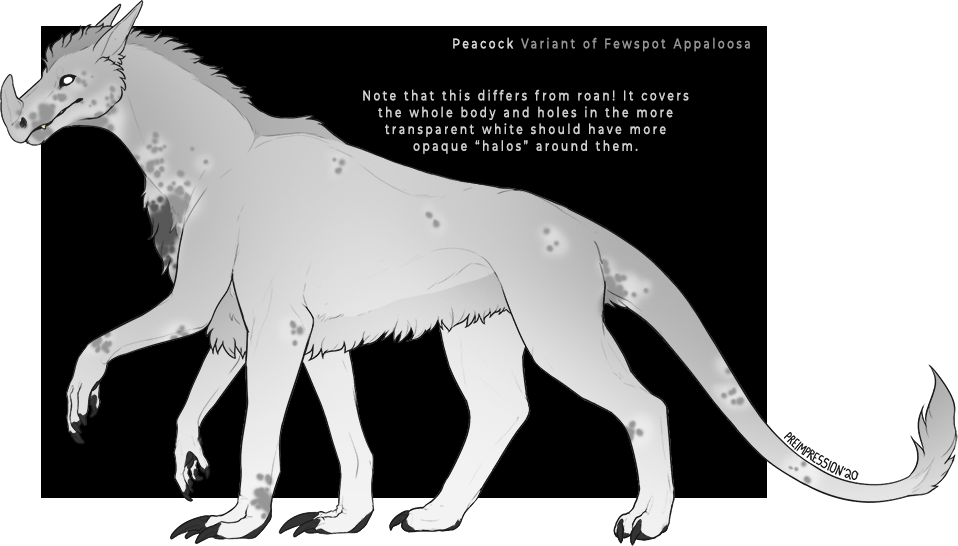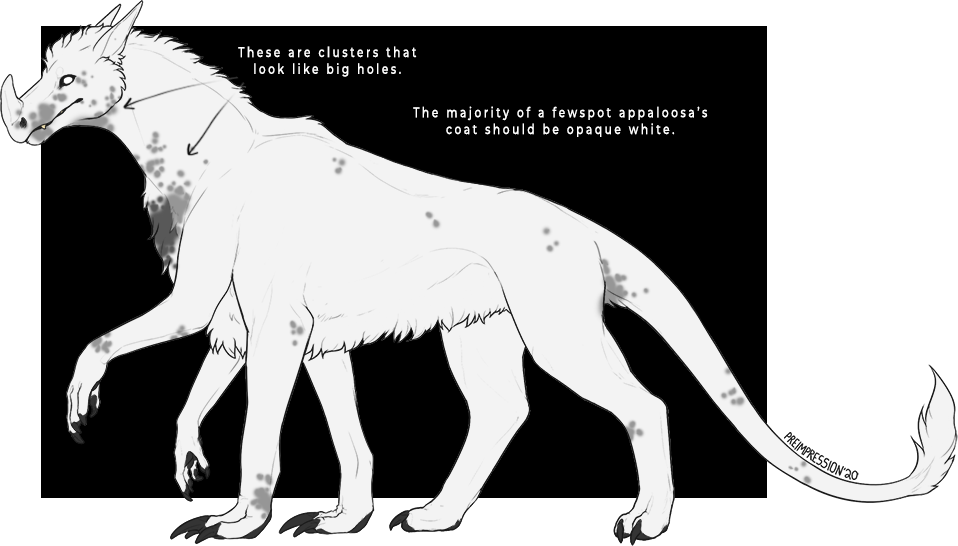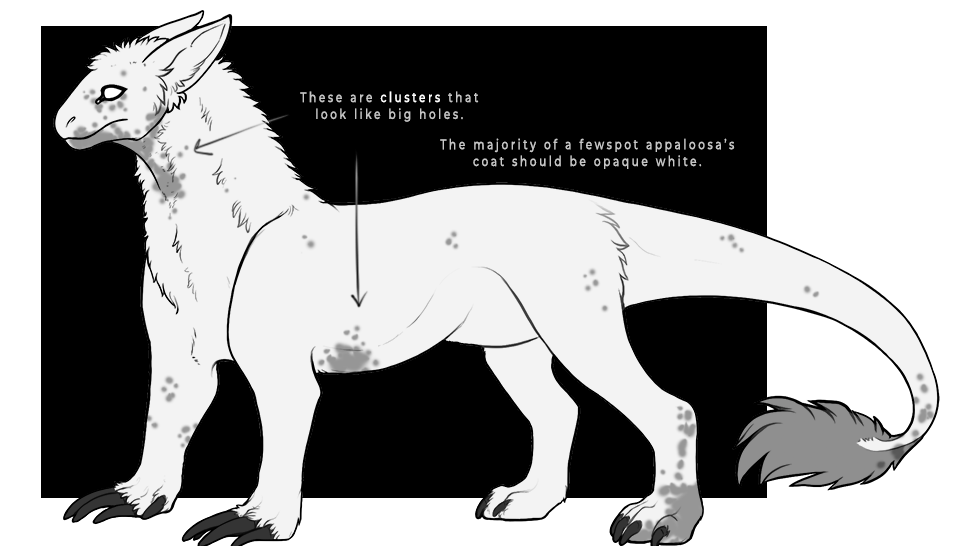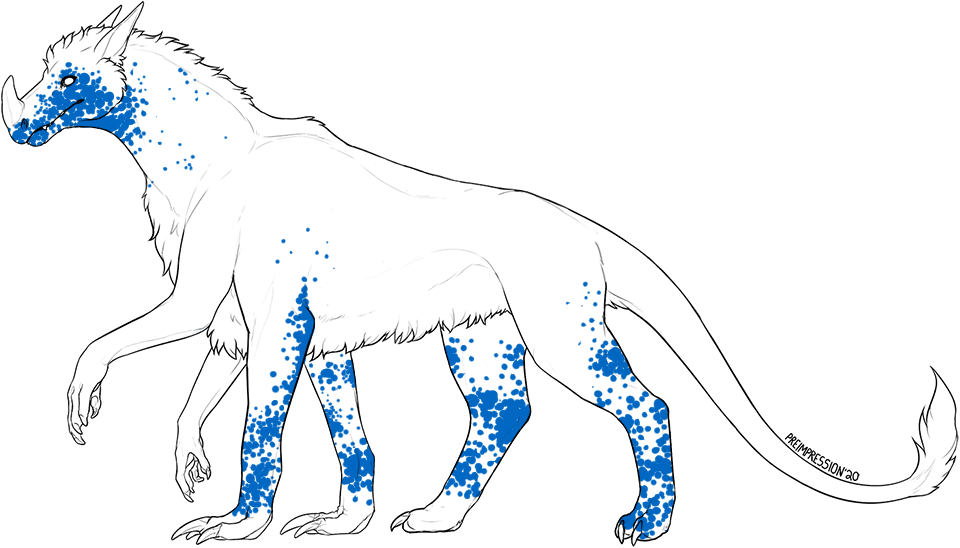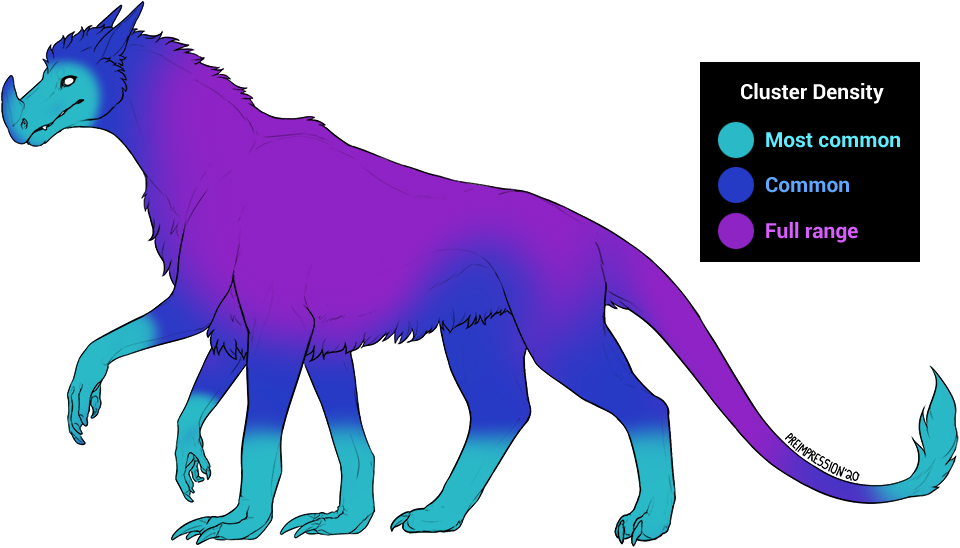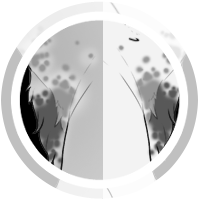
Fewspot Appaloosa
Fewspot Appaloosa is a heavy appaloosa gene that leaves the body primarily white with a scattering of small holes. That means that 80%-98% of the body should be covered by opaque white and anything in the remaining 20% can be made up of small holes and clusters.
The largest cluster should be, in total, no larger than the head or 10% of the body.
Clusters
Clusters may allow a good deal of the design to show through, but they should still be obviously clusters of rounded or oval holes. Each individual hole should be no bigger than that colonist's species' natural eye size. Clusters are mostly found around the joints, as well as the head and shoulders. They can be especially dense around the knees and ankles/wrists, as well as the face.
Hole Sizes
Individual holes should never be bigger than the colonist's eye. They should not be confused with regular appaloosa cut-outs and should be rounded and smooth. Clusters can be larger than the eye, but there should be speckles within displaying some of the spaces between holes.
Left: Correct, with no individual holes larger than the eye. Consider attempting to put the hole behind the eye to determine if it's small enough.
Right: Incorrect example, with holes larger than the eye as well as areas that appear to be "cutouts" surrounded by small holes.
Peacock is a lineage-linked variant of specific Appaloosa markings that have this text on their page. Peacock allows for heavy and soft fading of the large white portions of this gene, though the actual holes in the gene should have full-opacity around them. The edge between this full opacity white and the faded portions should be fairly gradual.
Peacock appaloosa can only fade to 50% opacity.
Only colonists who have the following natives in their visual ancestry or have a visible ancestor with peacock appaloosa may, in turn, have peacock.
Peacock appaloosa does not show in the phenotype.
